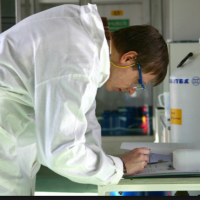Is the "Traditional Tester" Just a Myth?

When discussing agile and its impact on the industry, the concept of the “traditional testing role” is often a topic of conversation. The quick and iterative nature of the agile methodology has put the duties of the tester in the spotlight, and the idea of testers playing a bigger role throughout the process has become increasingly popular.
However, we shouldn’t just assume that this “traditional” tester is as common as we seem to make it sound. You can (and should) argue that agile has impacted testing—with more comprehensive test planning being replaced by individual sprints and automation playing a bigger role to keep up with regression testing.
But according to testing mentor, Bj Rollison, there was never really a traditional testing role to begin with.
“The concept of a ‘traditional’ testing role is a complete farce. The traditional testing role was created by very senior and experienced developers such as Boris Beizer, Glenford Myers, and Jerry Weinberg,” he told StickyMinds. “When I was hired at Microsoft, all testers were expected to have an understanding of operating systems and programming languages. Was that the ‘traditional’ testing role?”
Looking beyond testing, this split between traditional and agile is further used to show just how different modern software development is. If you break it all down, agile gives customers greater involvement in the feedback loop, there are lower overall costs to the company since bugs can be squashed before they cause major issues, and the speed of agile provides an overall more flexible operation.
In this sense, there’s a greater line of distinction between how we used to develop software and how agile teams and companies are now handling the process. But Rollison continues his crusade against the idea of the traditional tester by encouraging people to drop this way of thinking altogether. By sticking with these concrete terms, it will be impossible to keep up with this fluid industry.
“The key is to forget ‘traditional’ roles. The industry changes very quickly,” Rollison continues. “If you get mired down in some abstract notion of a ‘traditional’ role, you may soon find that your value to your company or project becomes obsolete and unnecessary.”
Has software testing changed? Yes, and there are plenty of strong examples out there that illustrate this thought. However, to simply argue that testing used to be one-dimensional before agile came along would be a bit of revisionist history. Testers were previously expected to have high technical skills, so while agile testers are now asked to bring greater value throughout the entire development process, the responsibility of testing has always been bigger than just busting bugs.

